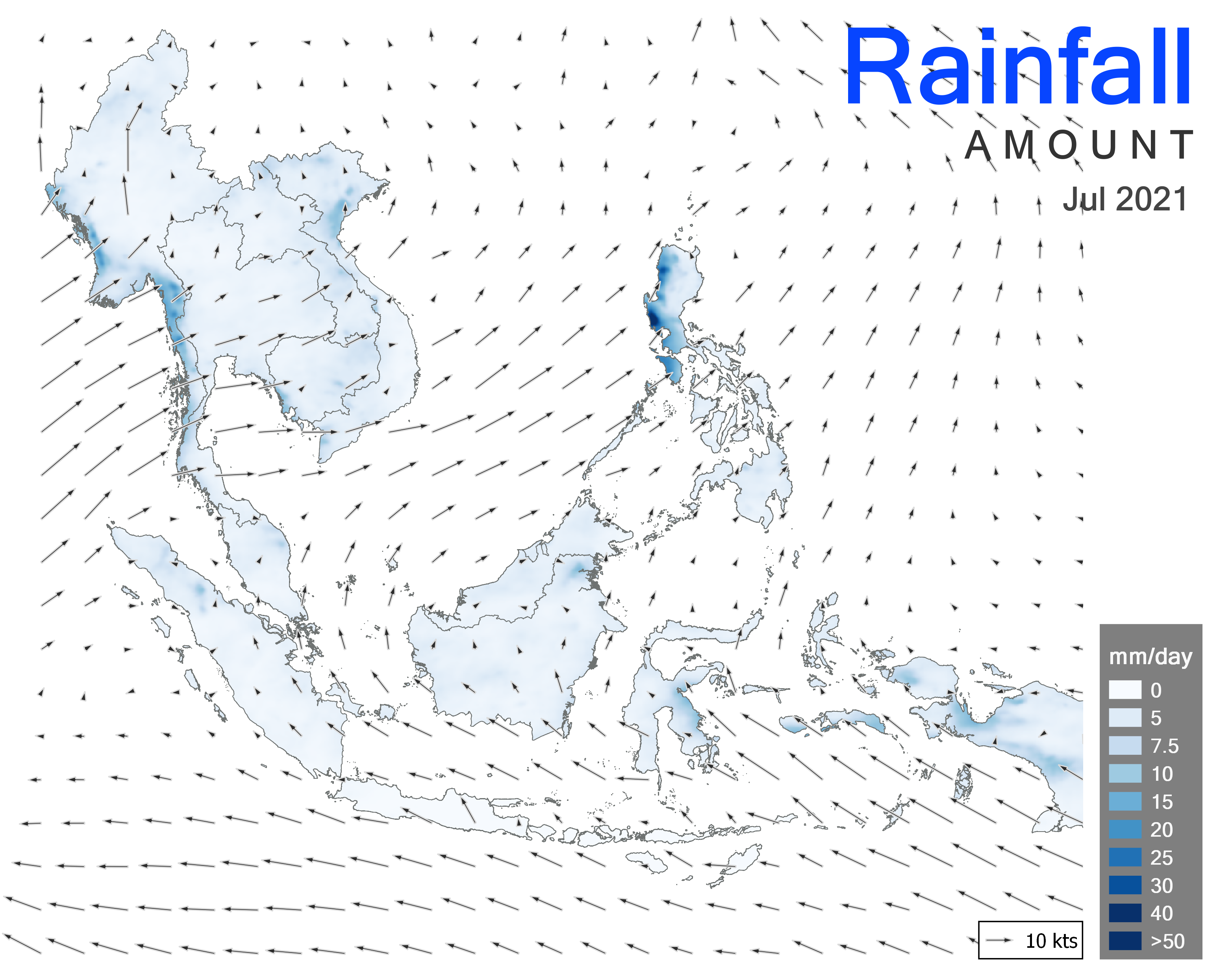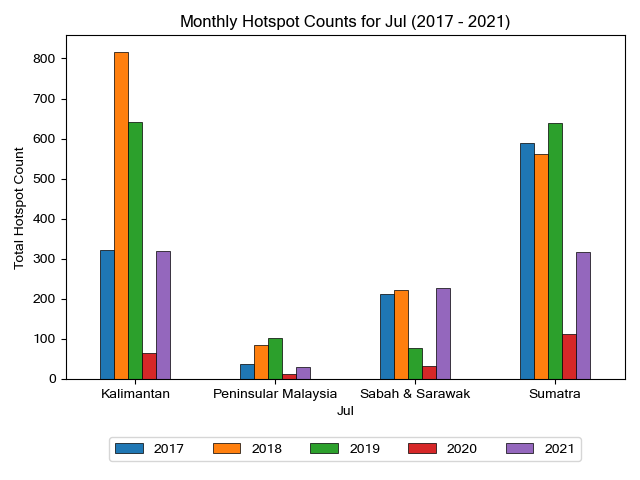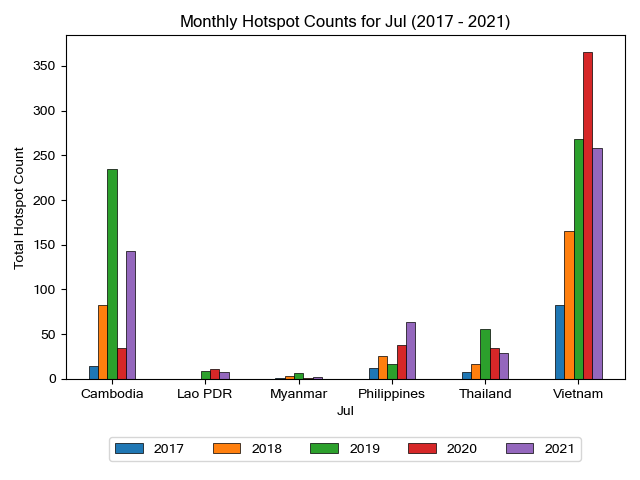Review of Regional Haze Situation for July 2021
1.1 In July 2021, Southwest Monsoon conditions prevailed over the ASEAN region with the low-level winds blowing from the southeast or southwest on most days (Figure 1). During the first fortnight of the month, wet weather was observed over most parts of the ASEAN region as the monsoon rain band remained near the equatorial southern ASEAN region. Towards the second fortnight of the month, the monsoon rain band shifted further north of the Equator. This led to dry conditions over parts of the southern ASEAN region and indicated the start of the region’s traditional dry season.
1.2 As it is the traditional wet season for the northern ASEAN region, showers were observed over the region on most days during the month. The average daily rainfall was highest over the northern parts of the Philippines during the month (Figure 1) due to the influence of Typhoon Cempaka that formed in the South China Sea, west of the Philippines in the second fortnight of the month.
1.3 For the July review period, the hotspot counts over the ASEAN region for 2021 were mostly lower or comparable to those in previous years (Figures 2 and 3), except for Sabah and Sarawak as well as the Philippines where slightly higher hotspot counts were detected.
1.4 Isolated to scattered hotspots were detected in most parts of the southern ASEAN region (Figure 4) in July 2021. Under drier conditions in the second fortnight of the month, the hotspot situation over central and southern parts of Sumatra as well as the northern and western parts of the Borneo Island worsened. Hotspot clusters with intense fires were detected in Riau, Jambi, South Sumatra, Lampung, Bangka-Belitung and Sarawak as well as in West and North Kalimantan (Figure 4 and Figure 5). Localised smoke plumes were observed to emanate from clusters of hotspots detected in Sumatra and Borneo Island on some days.
1.5 In the northern ASEAN region, isolated hotspots were detected mostly in Viet Nam and Cambodia during periods of drier conditions, but no smoke plumes were observed (Figure 4).






